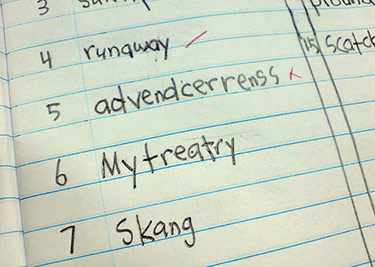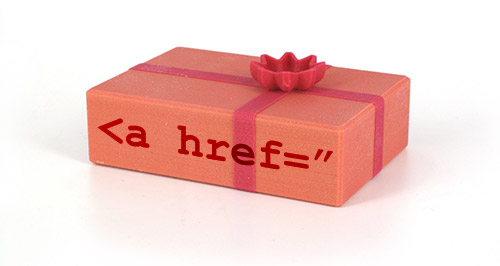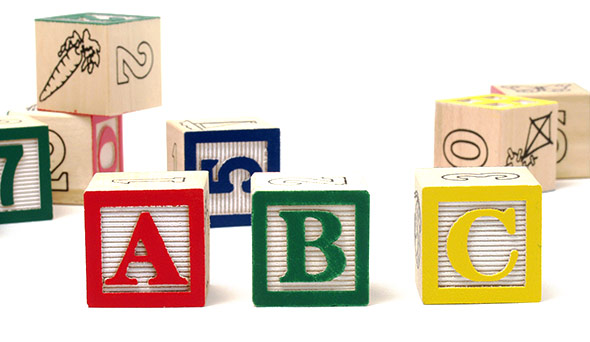7 Lovely Things About HTML5 Markup

HTML5 — the latest generation of the Web's markup language — has been creating quite a stir over the last couple of years, as more and more browsers implement the latest and greatest HTML5 features. HTML5 really hit the mainstream in 2010, in part driven by Steve Jobs' open letter, Thoughts on Flash.
HTML5 is quite a broad term, encompassing everything from the revised markup specification through to new API features such as audio, video, canvas and geolocation.
In this article I'm going to focus on the markup language itself, and look at seven reasons why I love HTML5's markup more than HTML4's. We'll look at:
- Doctypes
data-attributes- Some new and improved elements and attributes
- More flexible linking
- Simpler markup, and
- Enhancements to web forms.
A doctype you can actually remember

An HTML4 doctype:
<!DOCTYPE HTML PUBLIC "-//W3C//DTD HTML 4.01//EN"
"http://www.w3.org/TR/html4/strict.dtd">
<!doctype html>Author-defined attributes

type, src, href, and so on. Now, in HTML5, you can also create your own attributes! The only requirement for an author-defined attribute is that it begins with the prefix "data-".For example:
1 2 3 4 5 6 7 8 9 | <img id="img1" src="eiffelTower.jpg" alt="Eiffel Tower" data-country="fr" data-imageType="thumb" data-fullURL="/photos/large/eiffelTower.jpg"><img id="img2" src="coliseum.jpg" alt="Coliseum" data-country="it" data-imageType="thumb" data-fullURL="/photos/large/coliseum.jpg"> |
data- attributes have no direct effect on the appearance or behaviour of elements. Their main purpose is to let you associate arbitrary data with an element.You can access the values of
data- attributes using the DOM methods such as element.getAttribute(), just like regular attributes. You can also access all the data- attributes in an element using the new dataset DOM property, like this:
// Displays "/photos/large/eiffelTower.jpg":
alert( document.getElementById('img1').dataset.fullurl );Currently only some WebKit browsers support the
dataset property; however, Morten Barklund has created a nice jQuery plugin that adds dataset support to all browsers.New semantic elements

div and span elements with more meaningful element types.Some of my favourite HTML5 semantic elements are:
headerandfooterfor page and article headers and footers respectivelyarticlefor encapsulating an article or blog postnavfor representing the site navigationfigureandfigcaptionfor including figures and figure captionstimefor representing dates and times
1 2 3 4 5 6 7 8 9 10 11 12 13 14 15 16 17 18 19 20 21 22 23 24 25 26 27 28 29 30 31 32 33 34 35 36 37 38 39 40 41 | <!doctype html><html lang="en"><head> <title>New WonderWidget Released</title></head><body> <nav> <ul> <li><a href="/">Home</a></li> <li><a href="/archive/">Archive</a></li> <li><a href="/about/">About</a></li> </ul> </nav> <article> <header> <h1>New WonderWidget Released</h1> <p><time pubdate datetime="2011-07-11"></time></p> </header> <p>Curabitur tortor. Pellentesque nibh. Aenean quam. In scelerisque sem at dolor. Maecenas mattis. Sed convallis tristique sem. Proin ut ligula vel nunc egestas porttitor.</p> <figure> <img src="eiffelTower.jpg" alt="Eiffel Tower"> <figcaption>The Eiffel Tower, earlier today</figcaption> </figure> <footer> <p>Posted by: Matt Doyle</p> <p><a href="comments/">Comments</a></p> </footer> </article></body></html> |
Internet Explorer 8 and earlier don't understand these new element types, which means that you can't style them with CSS or access them in the DOM via JavaScript. To work around this, check out Remy Sharp's HTML5 Shiv script.
Handy new attributes

Here are some good ones:
contenteditableis now officially part of the HTML standard, making it easier to create rich-text web editors.spellcheckallows you to toggle spell checking for a text field or editable element.reversedlets you create an ordered list in reverse (descending) order.draggableanddropzonelet you add browser-native drag-and-drop functionality to any element (here's a great tutorial on HTML5 drag-and-drop).
target attribute, which lets you target iframes, open links in new windows, and so on. This attribute was deprecated in HTML4 Strict, but with HTML5 the W3C has had a change of heart and reinstated it.Being able to wrap a link around almost anything

a (anchor) elements were defined as inline elements and, as such, could only contain other inline elements, such as text, images and span elements. This made it difficult to wrap a link around a block-level element, such as a div containing multiple elements. You had to resort to wrapping links around the individual inline elements inside the div, or adding a JavaScript click handler to the div.Now, in HTML5, links can contain flow content, which is an HTML5 term roughly equivalent to HTML4's "block-level". This means that you can happily include
divs, headings, tables, and lots more inside a link. For example:1 2 3 4 5 6 7 8 | <a href="mypage.html"> <div> <h2>Linked div</h2> <p>Here's an entire linked div containing an h2 heading, a paragraph, and an image!</p> <img src="eiffelTower.jpg" alt="Eiffel Tower"> </div></a> |
a elements, as well as buttons, iframes, select menus, and so on.Simplified markup

1 2 3 4 5 | <!-- HTML4 --><meta http-equiv="Content-Type" content="text/html; charset=utf-8"><!-- HTML5 --><meta charset="utf-8"> |
1 2 3 4 5 | <!-- HTML4 --><script type="text/javascript"> ... </script><!-- HTML5 --><script> ... </script> |
1 2 3 4 5 | <!-- HTML4 --><style type="text/css"> ... </style><!-- HTML5 --><style> ... </style> |
Enhanced forms

My personal favourites are:
- New, more meaningful
inputtypes:email,url,tel,number,range,date,datetime,search, and more. These serve 2 main purposes:
- Browsers can automatically validate the fields to make sure they contain the correct type of values. No JavaScript validation needed!
- Some browsers, such as Mobile Safari, can display context-aware keyboards based on the field type. For example, if the user is entering a telephone number into an
<input type="tel">field then the browser displays a telephone keypad.
- The
autofocusattribute that automatically focuses a form field of your choosing when the form first loads. - The
placeholderattribute that lets you display placeholder text inside a field to guide the user. - The
requiredattribute for making form fields required. As with theinputtypes, this triggers automatic browser validation — the user can't submit the form until they've filled in allrequiredfields.
Summary
While HTML5 has some widely-publicised headline features such as native video, thecanvas element and the geolocation API, there are also many improvements to the markup language itself that are worth a look. In this article you've touched on 7 things that make HTML5 markup more powerful — and nicer to write — than HTML4:- A much simpler doctype that's easy to remember and type
data-attributes for adding arbitrary data to page elements- New semantically-rich elements like
header,footer,article,nav,figure,figcaptionandtime - Useful new attributes such as
contenteditable,spellcheck,reversed,draggableanddropzone - Links can now be wrapped around flow content (block-level elements)
- Simpler markup for things like character sets,
scriptblocks andstyleblocks - Additional form input types and attributes that add more meaning to form fields and enable auto-focusing fields, placeholders, and browser-native form validation
7 Lovely Things About HTML5 Markup
![7 Lovely Things About HTML5 Markup]() Reviewed by BloggerSri
on
11:11 PM
Rating:
Reviewed by BloggerSri
on
11:11 PM
Rating:

No comments:
Post a Comment